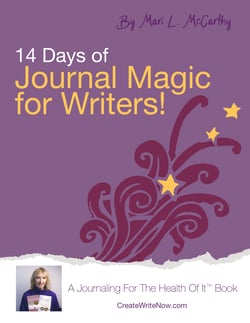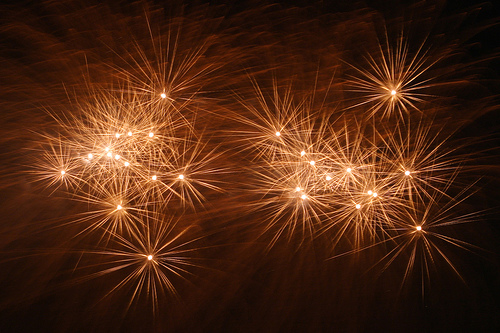 Flash memoirs are intensified, very short, personal stories modeled on flash-writing traits. When you’re ready to write one, your journal can provide the best possible raw material. A flash memoir relies on the in-the-moment account of your experience and takes it into the crafted-story realm – something you’d like others to read and react to.
Flash memoirs are intensified, very short, personal stories modeled on flash-writing traits. When you’re ready to write one, your journal can provide the best possible raw material. A flash memoir relies on the in-the-moment account of your experience and takes it into the crafted-story realm – something you’d like others to read and react to.
I keep a journal for my nieces of stories and happenings and musings I want them to have when I’m gone. It’s equal parts advice column, family stories new and old, and events that have shaped my life that they’ll likely be unaware of in theirs. Learning flash writing techniques transformed the way I capture stories for them. With an eye toward an engaging opening line and a bit of effort to heighten the ah-ha or funny moment, my entries have gone from plain personal accounts to lively, publishable stories.
The most common comment I hear in class regarding the challenge of getting from here [journal entry] to there [flash memoir] is some version of “What, no setup? I have to leave the context out? That means I have to unlearn a whole bunch of writing rules I learned in school!” Yep, that’s right – and it takes some practice. Journal entries are often overt accounts of what happened and how that impacted you, whereas flash memoirs are usually less complete and a more engaging telling of the event.
To give it a try,
- Find a journal entry you’d like to transform into a flash memoir.
- On a blank sheet of paper, rewrite each sentence of the journal entry starting every sentence on a separate line.
- Using scissors, cut each sentence apart so you have a bunch of paper strips to work with.
- Lay the strips out in random sequence and move them around looking for the compelling opener for your story and a more interesting story structure.
[Thanks to Cathy Tenzo at Maypole Memoirs for this enlightening and fun exercise: http://maypolememoirs.com/.)
Feel free to write new sentences on strips of paper, if they occur to you, and insert.
For example, one of my journal entries begins like this:
“The first time I slept outside I was on a cot in the desert listening to a coyote howl. I could reach out and dip my fingers in the lake, and I could hear my dad’s loud snoring from the camper. I was so enamored with the deep black sky and dazzling galaxy of stars that I couldn’t take my eyes off them. I tried to go to sleep but the big dipper …”
After I cut the sentences apart, I liked this better as the beginning of a flash story:
“I could reach out and dip my fingers in the dark black of the lake to touch the dazzling galaxy of stars – the big dipper just beyond my fingertips. I could hear a coyote howling …”
I’ve cheated and already started recombining words from here & there, but I’m sure you get the gist. I think this will be a much more engaging start to the story.
I hope you enjoy the new challenge of flash storytelling and that you’ll share your comments and first results so we can all benefit from your experiments.
###
 Christine Houser reads, writes, studies, and teaches flash creative nonfiction in Seattle, and blogs at www.flashmemoirs.com. Connect on Twitter at @flashmemoirs and #lifewriting.
Christine Houser reads, writes, studies, and teaches flash creative nonfiction in Seattle, and blogs at www.flashmemoirs.com. Connect on Twitter at @flashmemoirs and #lifewriting.
If you're a writer, journaling can strengthen your craft. Our self-paced journaling course, 14 Days of Journal Magic for Writers, combines daily prompts with instruction and encouragement to help you boost creativity and strengthen and hone your writing craft.
###
Image from http://www.flickr.com/photos/mrhayata/1160370012/


Leave Comment